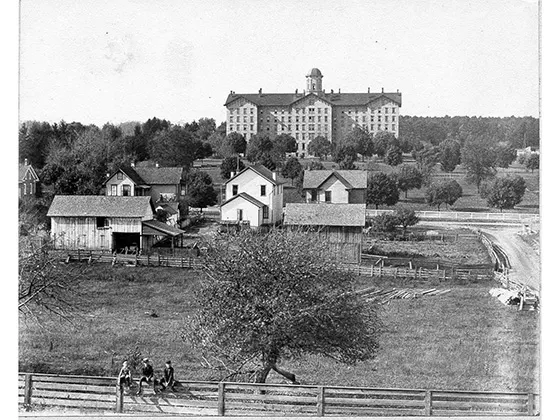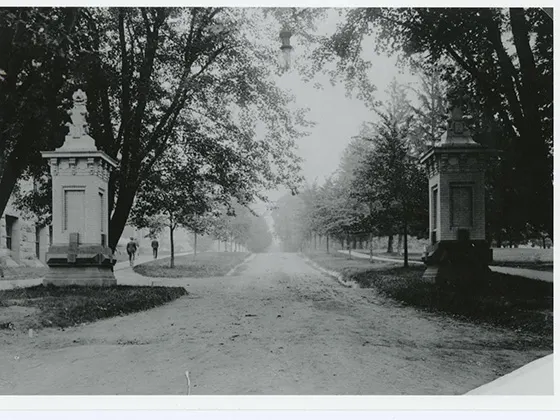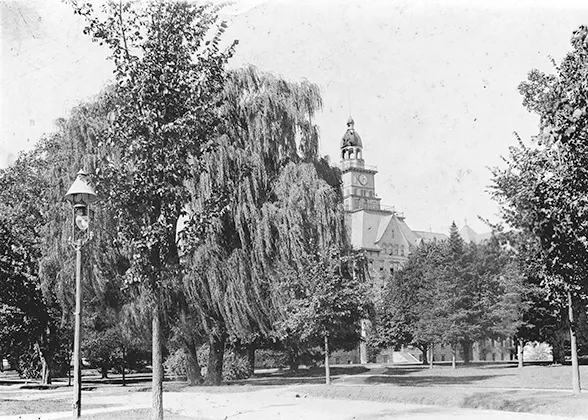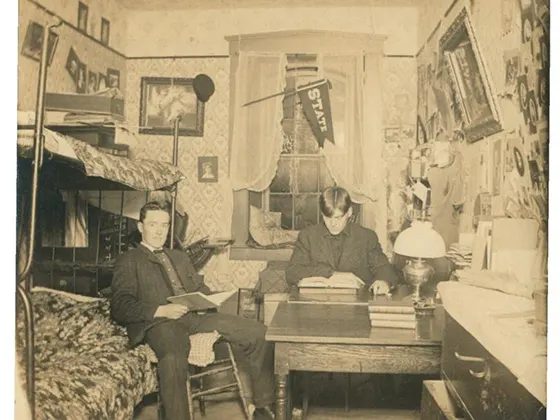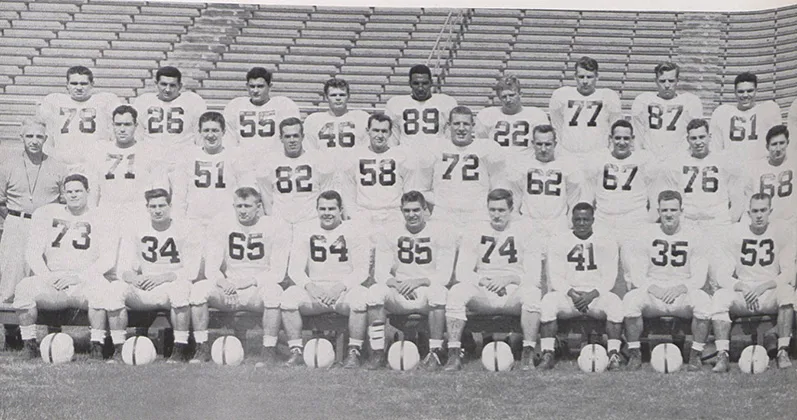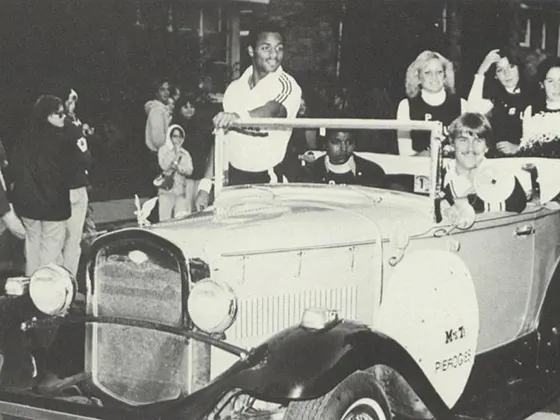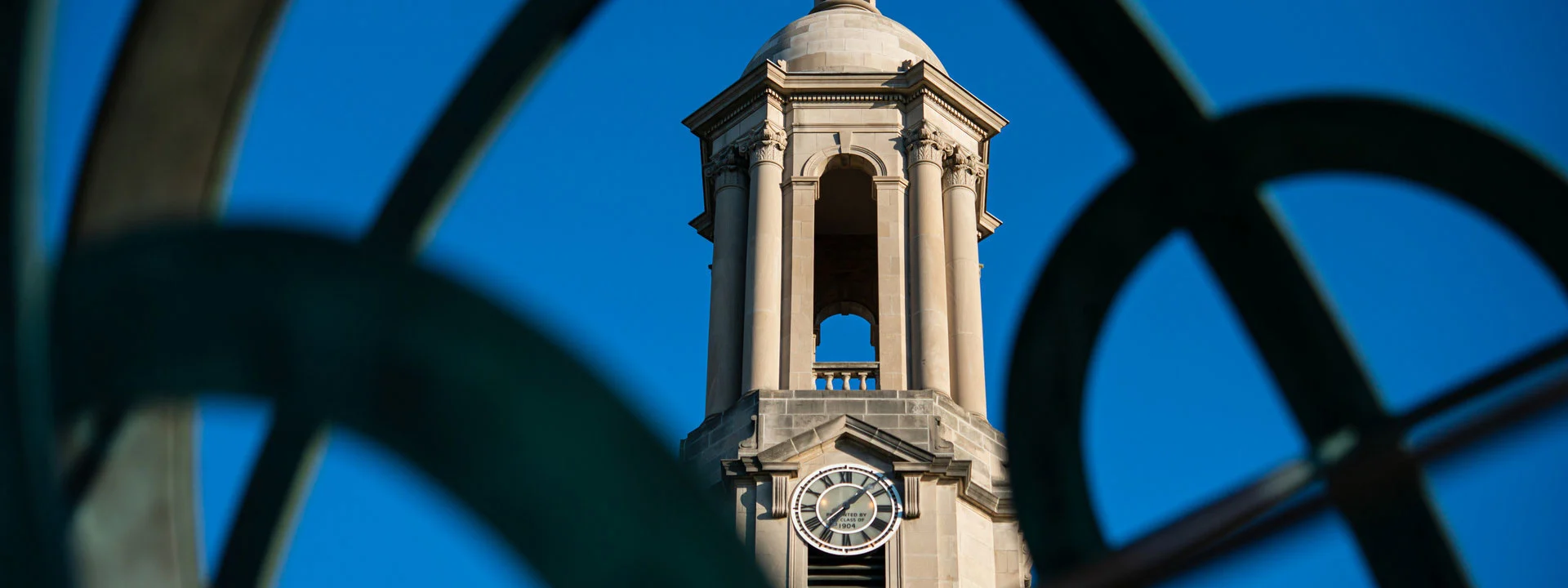
Our History
As Pennsylvania's only land-grant university, Penn State has a broad mission of teaching, research, and public service. But that mission was not so grandly conceived in 1855, when the Commonwealth chartered it as a college of agricultural science to apply scientific principles to farming.
Centre County became the site of the new college in response to a gift of 200 acres from gentleman farmer and ironmaster James Irvin of Bellefonte. Founding President Evan Pugh drew on the scientific education he received in Europe to plan a curriculum that combined theoretical studies with practical applications.
Pugh and similar visionaries in other states championed Congressional passage of the Morrill Land-Grant Act in 1862. The act enabled states to sell federal land, invest the proceeds, and use the income to support colleges "where the leading object shall be, without excluding scientific and classical studies ... to teach agriculture and the mechanic arts [engineering] ... in order to promote the liberal and practical education of the industrial classes in all the pursuits and professions of life." The state legislature designated Penn State the land-grant institution of Pennsylvania.
But not until the 1880s, under the leadership of President George W. Atherton, did the college expand its curriculum to match the Land-Grant Act's broad mandate. From that time onward, curriculums in engineering, the sciences, the liberal arts, and more began to flourish. In the early 1900s, Penn State introduced cooperative extension and additional outreach programming, extending the reach of its academic mission.
An even greater segment of the Commonwealth's population had opportunities for engagement in the 1930s when Penn State established a series of undergraduate branch campuses, primarily to meet the needs of students who were location-bound during the Great Depression. Those campuses were predecessors of today's system of twenty-four Penn State campuses located throughout the Commonwealth.
Penn State began offering systematic advanced-degree work in 1922 with the formation of the Graduate School (now the J. Jeffrey and Ann Marie Fox Graduate School). Graduate education and research evolved hand in hand. By 1950 the University had won international distinction for investigations in dairy science, building insulation, diesel engines, and acoustics, and other specialized fields.
A college of medicine and teaching hospital were established in 1967 with a $50 million gift from the charitable trusts of renowned chocolate magnate Milton S. Hershey. In 1989, the Pennsylvania College of Technology in Williamsport became an affiliate of the University. In 2000, Penn State Law and the Dickinson School of Law in Carlisle, Pa., merged, and the University operated two law schools at the separate locations. In the 2024-25 academic year, reunification was approved, and today Penn State Dickinson Law operates as a single, unified law school with two locations: Carlisle and University Park. Penn State's online World Campus graduated its first students in 2000.
From Tradition to Today: Penn State’s Storied Past
Step back in time and see how Penn State looked in the 1800s. When students first arrived, the landscape looked quite different. Old Main, with its iconic 1863 bell tower, was the heart of campus life. Discover how Penn State began to grow, from blacksmith shanties to the major building projects that shaped the university’s future. Read more about the campus’s transformation.
Since 1859, the intersection of College Avenue and Allen Street has welcomed visitors to Penn State’s campus. Once lined with wooden fences to keep out roaming livestock, the entrance has transformed over time. In the early 1900s, stone pillars featuring the iconic “Ma” and “Pa” lions marked the spot, eventually giving way to the grand memorial gates we see today. Explore the story behind Penn State's gateway.
Planted in 1859, Old Willow has been a symbol of campus life for generations. Though the original tree fell in 1923, its legacy has lived on through new plantings. Now, a fourth-generation Old Willow has taken root on campus, continuing one of the university's longest traditions. Learn more about the history behind this iconic tree.
Did you know the original Old Main doubled as a residence hall until the 1920s? Discover how campus living at Penn State has evolved from modest beginnings to the dynamic residence life of today. Explore snapshots that capture the student experience through the years.
The annual Blue-White Game has deep roots, starting in 1951 as Penn State's first intersquad spring scrimmage. The teams—split into Blue and White—faced off for the “water bucket” trophy, with about 500 fans in attendance. This cherished tradition has grown ever since. Discover the history behind this long-standing event.
Homecoming at Penn State is rooted in tradition and nostalgia. Since 1920, alumni and students have come together to celebrate their Penn State pride. From parades and float competitions to festive gatherings, the celebrations highlight the heart and spirit of the university. Explore the history and traditions that make Homecoming special.
Penn State THON, a 46-hour dance marathon, began in 1973 with just 78 dancers and has since grown into the world's largest student-run philanthropy. Over the years, THON has raised more than $200 million for the Four Diamonds Fund, supporting families affected by pediatric cancer. Check out the photo gallery that captures memorable THON moments.

